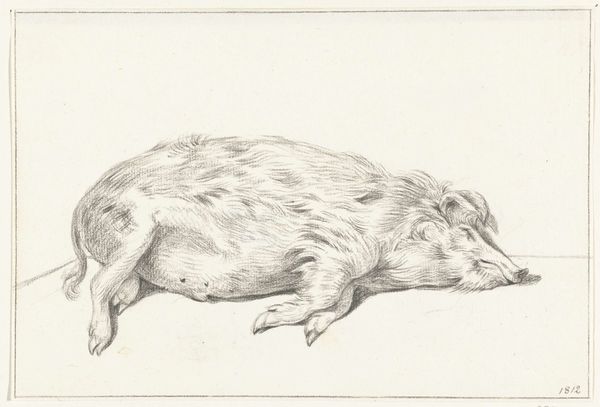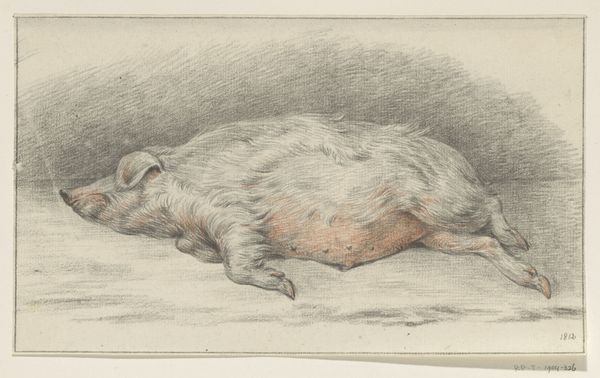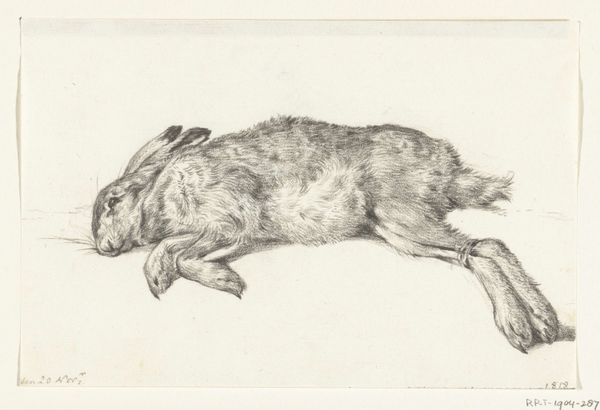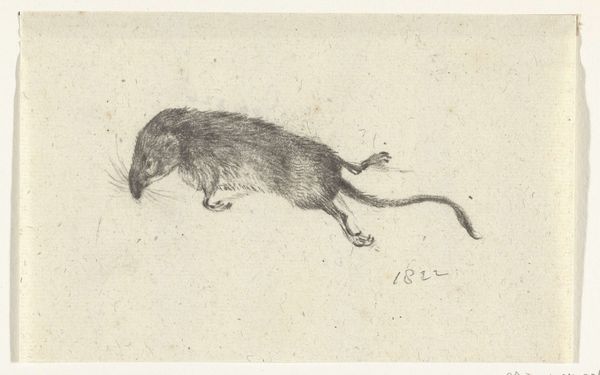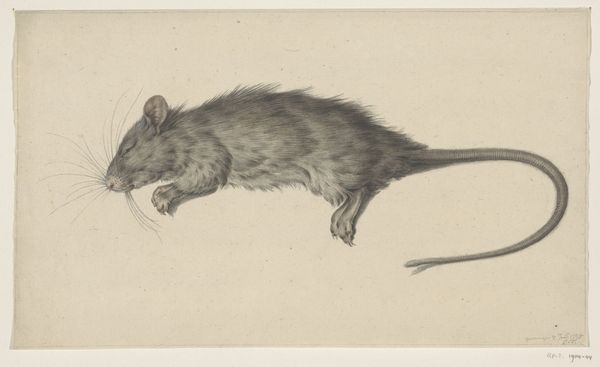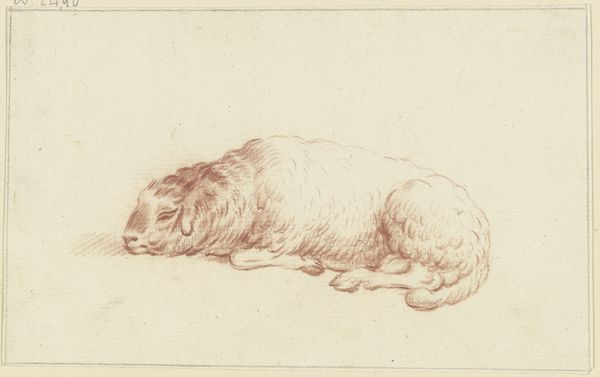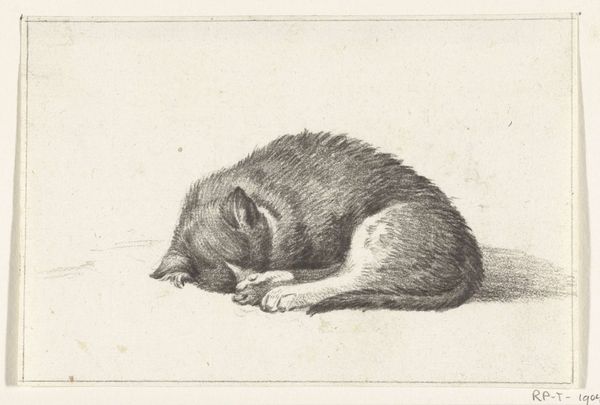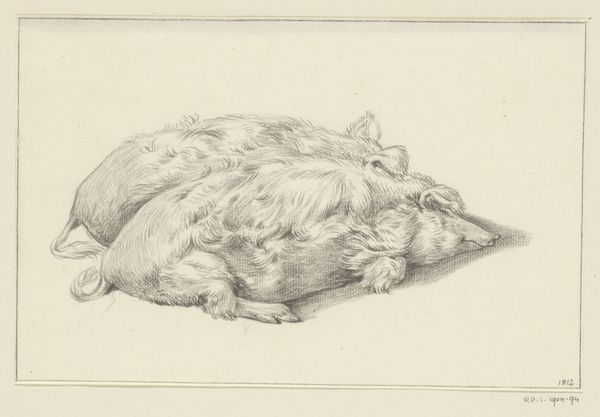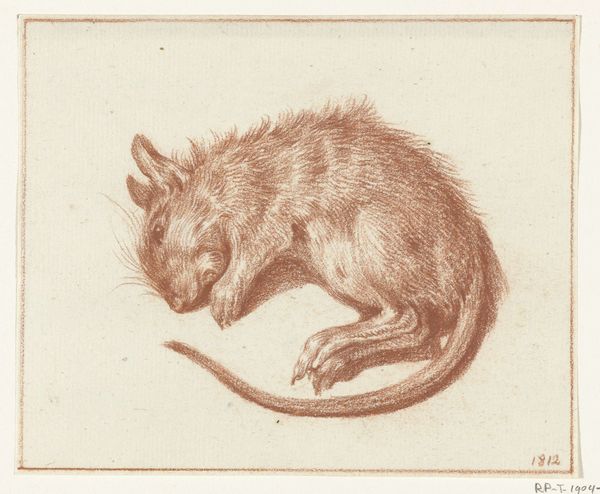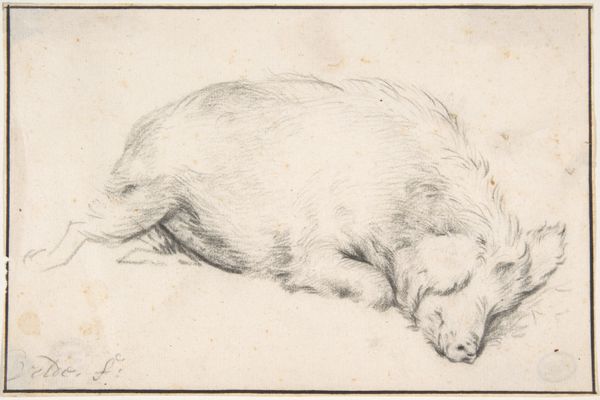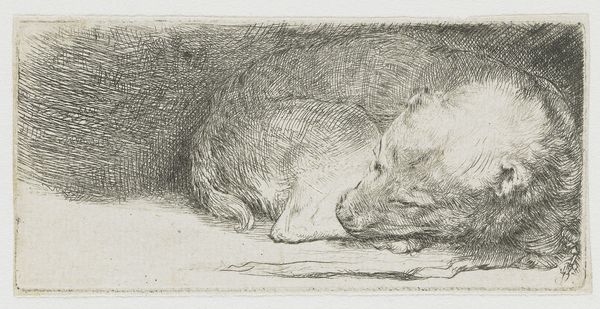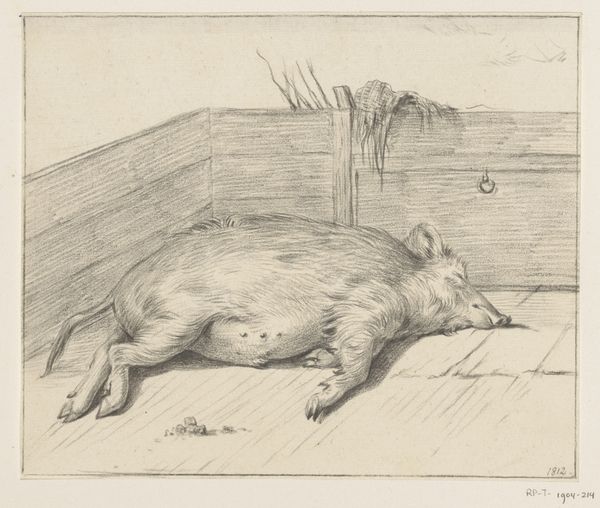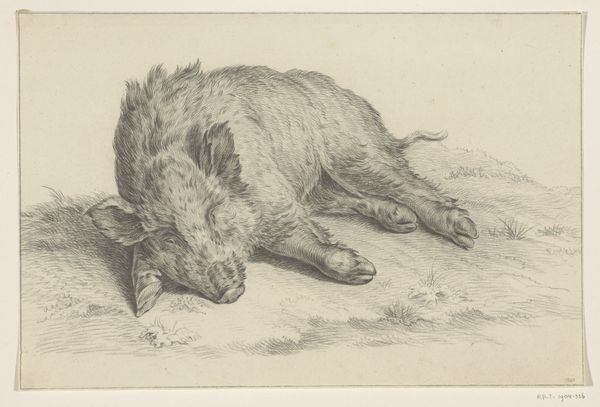
drawing, pencil
#
drawing
#
figuration
#
pencil drawing
#
romanticism
#
pencil
#
realism
Dimensions: height 163 mm, width 284 mm
Copyright: Rijks Museum: Open Domain
Curator: Jean Bernard’s "Liggend varken, naar links," or "Lying Pig, Facing Left," created around 1819, captures our attention today. It’s a detailed pencil drawing, currently housed in the Rijksmuseum. My initial reaction is how tactile it feels despite being a drawing; I can almost feel the texture of the pig's bristly fur. Editor: Indeed, the surface is rendered in exquisite detail. However, what immediately strikes me is how vulnerable the subject appears. Placed against a blank background, it prompts reflections on power dynamics and our relationship with animals, particularly those raised for consumption. The work begs the question: how do we position ourselves in the grand scheme of labor? Curator: Thinking about production, consider Bernard's process. As a draughtsman, what compelled him to dedicate time to such a commonplace animal? This era saw a growing fascination with realism. Was this a commission? Was he seeking artistic merit in everyday subjects? We see the pencil strokes forming the shadows. Editor: Or might he have chosen a seemingly "ordinary" subject to elevate it and disrupt conventional hierarchies? Consider that during this era, abolitionist movements were gaining momentum, causing shifts in perceptions of oppression and subjugation. We can certainly examine such drawings in dialogue with those burgeoning debates on autonomy, race, gender, and enslavement, understanding how marginalized bodies—animal and human alike—were subjected to control and domination. Curator: The contrast is interesting. The pencil lines denote the skin of this animal. There is beauty here but this object is most likely used for its physical properties, and would thus return to being mere resources for human benefit. But the lines elevate it to an individual. Editor: Precisely. Even if the artist didn’t explicitly intend to make such a statement, by meticulously portraying the animal's vulnerability, he offers an intimate encounter. This provides a vital commentary on our ethical responsibilities. How much suffering are we, as consumers and citizens, willing to allow for production, consumption, or convenience? This speaks volumes about how society reflects on marginalized lives. Curator: I’ll walk away thinking about the labor needed to produce an artwork, no matter the subject; as well as questioning how we perceive animals. Editor: For me, the pig functions as a mirror, revealing our society's profound yet often unacknowledged inequalities and complicity with larger oppressive systems.
Comments
No comments
Be the first to comment and join the conversation on the ultimate creative platform.

